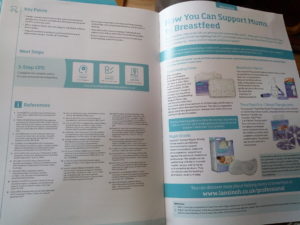I like Alice Roberts, she is interesting and clever. Some of the things she has written about birth have given me plenty to think about, and it’s good for me to think. This evening twitter drew my attention to an article in which she claims to take a “scientific approach to having a baby.” The article may be a year old, but it is relevant in the light of new guidance from NICE recommending that more women should give birth at home.
This of course has flushed all the extreme advocates of both hospital and homebirth right out of the woodwork, so here’s trope number one:
We all have to be for one thing and against the other.
Surely it’s a little more nuanced than that.
And it’s those nuances that make up the rest of the tropes.
Human birth is difficult and dangerous.
Except, not for everyone. Where does this information come from? What’s the evidence for that statement, as made by Roberts in the above article, and followed up by this statistic: “about five per 100,000 women die in childbirth and four per 1,000 babies” So, we’re not dropping like flies. And yes, in some cases that’s because modern medical intervention improves outcomes. But it’s also because in many cases, women’s bodies are apparently surprisingly good at giving birth. Up to date medical knowledge, high standards of midwifery training, and modern cleanliness are also factors, but these things are not exclusive to hospitals.
A healthy baby is the only important outcome.
Postnatal trauma is a real thing. Where the risk of a poor outcome to the baby is very small, maternal satisfaction with the birth process is actually highly relevant. The “healthy baby” trope buys into the patriarchal system where women must be compliant and put her unquestioning trust in the doctors; furthermore she should be grateful that they “deliver” her healthy live baby, no matter what they did to her, often without fully informed consent, in order to achieve that. The draft NICE guidelines acknowledge the importance of maternal satisfaction with the process; this is not the same as prioritising the process of birth over the goal of a healthy baby; it is simply stating that birth is a process. Giving birth is a huge physical and psychological event, and to reduce women to precious vessels whose only role is to produce live offspring is patronising at best.
A high proportion of women planning a homebirth end up transferring into hospital, so why bother?
Roberts quotes a 45% transfer rate for first time mothers, 12% for subsequent births. Of course, nobody goes into hospital before actually going into labour unless they’re suffering some severe condition such as pre-eclampsia. This is not an argument against labouring at home, and does not necessarily mean that those mothers who transfer in have less satisfaction. If we could take the value judgement out of home vs hospital, we could look at this as encouraging women to labour at home and only go in if necessary, rather than framing it as failure to birth at home.
If you need intervention, it’s instantly available in hospital.
Not true. You may have to wait a couple of hours for an anaesthetist to be available, or for the previous woman to move out of theatre. So plenty of time for that transfer.
Well duh, of course there’s a lower risk of intervention at home, because you can only carry out intervention in hospital.
This still isn’t an argument against homebirth, and it is one of the main reasons women might choose to birth at home. Yes, obviously, the tools are not available. If an intervention is necessary, then a transfer is going to be needed. But an intervention is less likely to be necessary where women give birth in a calm home-like environment. Statistics demonstrating a lower incidence of intervention in planned homebirths include those who transferred and then experienced intervention, because that happens.
Homebirth advocates present the research findings with the wrong priorities because they have An Agenda.
And by “wrong priorities,” we mean priorities that differ from hospital birth advocates. From Roberts’ article:
look up “home birth” on the National Childbirth Trust (NCT) website, […] the findings are laid out in exactly the opposite order to that in the original research paper and the RCOG’s statement: women having a home birth are more likely to have a “normal birth” without intervention; home births are safe for women having a second or subsequent baby; lastly: home birth increases the risk to the baby for first-time mums. The main outcome investigated by the study is the last to be mentioned.
What NCT are doing here is normalising straightforward birth. It’s all semantics, innit? If you do follow Roberts’ link to NCT, you will see that the risks are clearly mentioned. In fact, it took me several attempts to replicate Roberts’ results by searching NCT’s website; the first few articles I came up with were clearer, more accessible, and included links to relevant information from The Birthplace Study and the NHS.
I would argue that hospital birth advocates also have An Agenda.
Homebirth is unethical and dangerous
In January The Independent headline claimed that homebirth was “as dangerous as ‘driving without putting your child’s seatbelt on’.”
The always excellent NHS Choices website responded to this with the conclusion:
A case could be made that rather than discouraging home births, we should instead be improving the levels of support to women who choose to home birth and so reduce the risk of complications.
Perhaps that’s where we should leave it. This isn’t about our different choices making us good or bad people, or our different experiences making us successful or failures. It’s about informing and supporting families, even those whose priorities aren’t the same as yours.
Views expressed here are my own, and do not represent the views of NCT.

